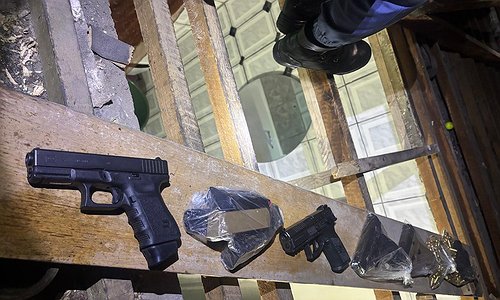South Africa's dry heartland gets its roar back

For over a century, lions, elephants, rhinos, buffalo, and leopards, South Africa’s famed Big Five, were absent from the Karoo, long since pushed out by incremental development.
A new vision for old land
Historically, the Karoo has been known more for sheep farming than safaris. Its semi-arid climate and sparse vegetation seemed inhospitable to large game. Yet, ecologists argue, the Big Five once thrived here, particularly in the Great Karoo and along the fringes of the Nama Karoo biome, where grasslands and river corridors offered vital resources.
Projects like the Samara Karoo Reserve have taken the lead in proving what’s possible. Located near Graaff-Reinet in the Eastern Cape, Samara has reintroduced cheetahs, black rhinos, and most recently, elephants, species that vanished from the region generations ago.
Their goal: to restore a fully functioning ecosystem and, in doing so, create lasting economic and ecological value.
Elsewhere, the Mountain Zebra-Camdeboo Protected Environment, a landscape-level conservation initiative, is laying the groundwork for connectivity between national parks and private reserves, enabling wildlife to roam more freely across historic ranges.
Eco-tourism and the wildlife economy
The reintroduction of the Big Five is more than a symbolic act. It’s a catalyst for the eco-tourism economy, one of the fastest-growing sectors in South Africa’s tourism industry. Unlike traditional game reserves concentrated in the lowveld, Karoo-based wildlife ventures offer a new product: a dryland safari experience steeped in history and scale.
Tourists are drawn not only by the chance to see charismatic megafauna but by the Karoo’s vast, open beauty and its unique cultural mix. In turn, this creates jobs for local communities as guides, rangers, hospitality workers, and artisans.
The Karoo Development Foundation and provincial entities have championed the wildlife economy as part of regional development plans, recognizing its potential to diversify rural economies long dependent on livestock and seasonal labour.
From beneficiaries to partners
For conservation to be durable, communities must be more than observers. In projects across the Karoo, there’s growing emphasis on benefit-sharing, skills development, and joint stewardship of land.
At the Khoisan Karoo Conservancy, efforts are underway to involve local communities in wildlife tracking and veld management alongside eco-tourism services. Training programs in tracking, guiding, and lodge management are helping to equip young people with skills that are locally grounded but globally relevant.
Crucially, land reform initiatives are intersecting with conservation, creating space for new models of community-owned reserves, a step toward transforming conservation from a colonial legacy into a shared future.
Scale, water, and perception
Still, the rewilding of the Karoo is not without challenges. Unlike the water-rich savannas of Kruger or Hluhluwe-iMfolozi, the Karoo’s fragile ecosystems demand careful planning. Water sources are limited. Carrying capacity for large herbivores is lower. And balancing predator populations with nearby livestock farming remains a political and practical hurdle.
There is also the question of perception. Many farmers find themselves in the precarious position have having their livestock bordering reserves with predators. Building trust between conservationists and agricultural stakeholders is essential to expanding the reintroduction footprint.
Toward a wild Karoo future
Despite these hurdles, the reintroduction of the Big Five is gaining traction as a tool not just for ecological restoration, but for rural regeneration. By reviving the wildlife that once roamed this environment, the Karoo is offering a new narrative: one where biodiversity fuels opportunity and where conservation is not a luxury, but a necessity for economic survival.




